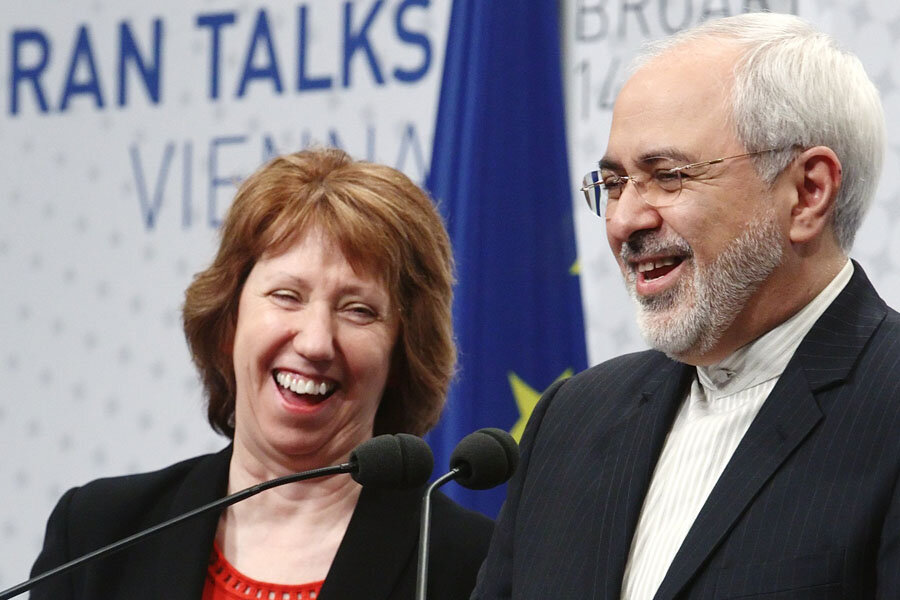Negotiators put acrimony aside to pursue final Iranian nuclear agreement
Loading...
| Vienna
Iran and six world powers announced agreement on a framework for resolving the decade-long dispute over Iran’s nuclear program in Vienna today. Negotiators will meet again on March 17 in Vienna, and every four weeks after that, to hammer out a final settlement that, in exchange for lifting sanctions, would ensure Iran’s nuclear program can’t produce a weapon.
One telling sign of progress was in tone. In a matter of months, the once-excruciating process of ideological lectures and acrimonious back-and-forth has been transformed into one of businesslike diplomacy.
“I don’t think surprised is quite the right word, but in the area in which we were at least satisfied – if not more than satisfied – it was that seriousness, the workmanlike approach, the depth and granularity of discussion,” said a senior US official.
Iranian officials also said the talks were “very cordial and positive,” and Foreign Minister Mohammad Javad Zarif told Iranian journalists: “We promised not to surprise each other.”
Talks between Iran and the P5+1 group (the US, Russian, China, Britain, France and Germany) began in early 2012 but yielded few results until last fall, when President Hassan Rouhani said during a visit to the United Nations in New York that Iran was ready to resolve the nuclear file in three months. In November the parties reached an interim agreement in Geneva.
No one discounts the scale of the issues that remain: setting limits on Iran’s uranium enrichment capacity, the final status of a deeply buried facility at Fordow and a heavy water nuclear reactor at Arak, and the extent and frequency of future UN inspections. Differences also arose over Security Council resolutions that require a halt to all uranium enrichment and limits on Iran's ballistic missile testing, until Iran resolves questions about possible past work on nuclear weapons.
“We won’t close any [nuclear] site and have announced that no one should prescribe anything or dictate a solution to the Iranian nation,” Mr. Zarif said. “The way to ensure the peaceful nature of our program is not closing the sites, rather its peaceful nature should be displayed openly, transparently and based on international regulations and supervision.”
Striking a different tone, the US official said nothing had been ruled out. “Everything of concern to us is on the table…has been discussed, will continue to be discussed, and will be addressed by the end of this comprehensive agreement."
So far all sides have stuck to the six-month interim deal reached in Geneva that requires Iran to stop further enrichment and convert or downblend its stockpile of uranium enriched to 20 percent purity – a level only a few technical steps from bomb-grade. The deal also required more intrusive and regular inspections, in exchange for modest sanctions relief.
“You won’t see a formal, written down framework or agenda, but we all know what it is, and everything is referred to in some way in the [Geneva agreement],” said the senior US official. “It has been difficult from the first step; it will be difficult to the last step, and it will have ups and downs, there will be good days, and there will be days where I’m sure…we’ll think, ‘We’ll never get here'."








